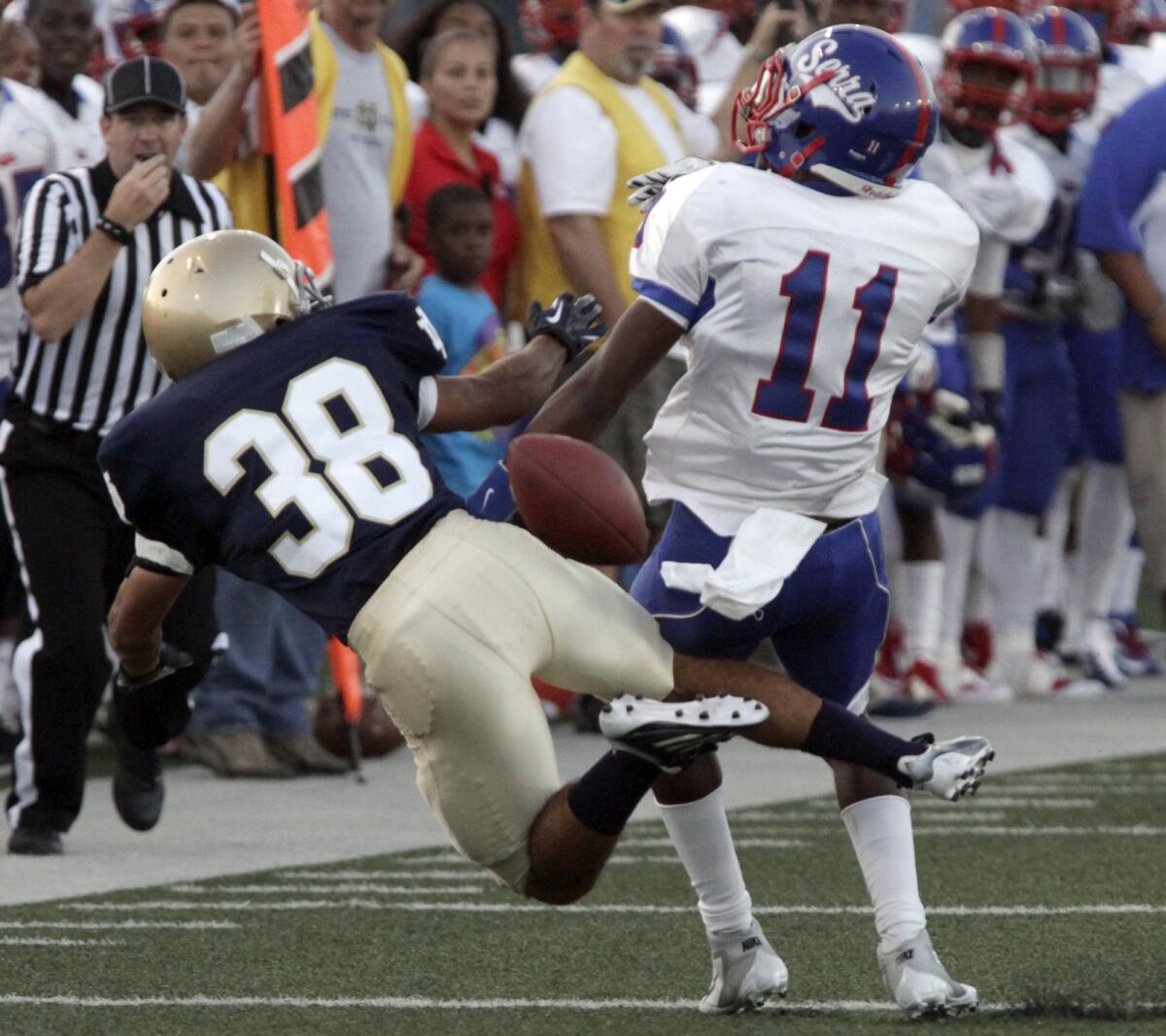Football: Gov. Brown signs bill restricting contact drills

- Share via
Gov. Jerry Brown on Monday signed into law AB 2127, which prohibits football teams at middle and high schools from holding full-contact practices that exceed 90 minutes on a single day, bans teams from holding more than two full-contact practices per week during the season and prohibits teams from conducting contact practices during the off-season.
The new restrictions, which take effect Jan. 1, 2015, are designed to help reduce concussions and other serious brain injuries.
The California Interscholastic Federation, in charge of high school sports in the state, supported the bill that was sponsored by Assemblyman Ken Cooley (D-Rancho Cordova).
“AB 2127’s practice guidelines will reassure parents that their kids can learn football safely through three hours of full-contact practice … to maximize conditioning and skill development while minimizing concussion risk,” Cooley said.
Nearly 4 million high school students nationwide suffer head injuries every year, according to the U.S. Centers for Disease Control and Prevention.
The new law comes at a time when all prep coaches in California will be trying to adjust to a new CIF rule this fall that restricts practices to no more than 18 hours in a week.
“Everybody is going to have to educate themselves and transition within the limitations,” said John Aguirre, commissioner of the Los Angeles City Section and a former football coach.
However, some high school coaches say the new law will interfere with their ability to field a quality team that is properly prepared to avoid injury.
Like many campuses, Roosevelt High School in Los Angeles holds full-contact practices in the pre-season, including a scrimmage game.
“In the summer, we do need to have full-contact. We do need to figure out who can play,” said Roosevelt head coach Javier Cid. “That’s a very important part of our summer practice. That’s how we determine who our starters will be.”
Cid said his team has shorter full-contact practices than allowed by the bill during the season and he is careful to provide the maximum safety for athletes. He wonders how the state will enforce the rule.
The measure was also opposed by some lawmakers who said the new law is overreach by state government.
Sen. Joel Anderson (R-San Diego) voted against the new rules, saying the legislature should not be telling local officials how much time should be devoted to full-contact practices.
“I expect high school coaches to use common sense,” Anderson said. “I expect them to be professional. I expect them to look at and understand their athletes and I expect them to protect their athletes to the best of their ability.” Some coaches, he fears, might take the state mandate as the new norm, even though it might be too much full-contact for some athletes, he said.
Sen. Steve Knight (R-Palmdale) voted against the bill, saying it would put California high schoolers at a disadvantage against more seasoned athletes from other states in competing for college scholarships.
But Cooley said 19 other states already ban full-contact practices in the off season.
High school football players average 600 hits to the head in a season and one-third of concussions occur in practice, according to Dawn Levine, a clinical neuropsychologist and assistant director of the Youth Sports Concussion Program for Kaiser Permanente.
As new studies shed light on the subject, “It makes sense to me to err on the side of caution and expose our kids to less hits, hopefully reducing the risk of any long-term damage,” Levine told a Senate committee during a recent hearing on the bill.
More to Read
Get our high school sports newsletter
Prep Rally is devoted to the SoCal high school sports experience, bringing you scores, stories and a behind-the-scenes look at what makes prep sports so popular.
You may occasionally receive promotional content from the Los Angeles Times.







